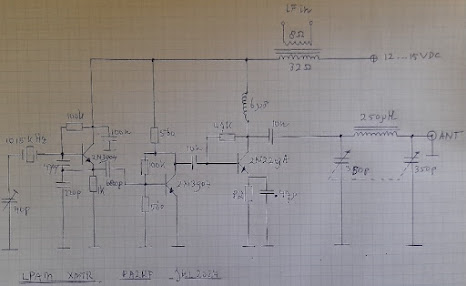Currently I am working on a 145 MHz - 50 MHz transverter. I combined various circuits and built it in Manhattan Style.
The core is a 96 MHz oscillator that enables me to tx and rx from 144...146 MHz in all modes available (FM, SSB, AM) on the HF transceiver (dial IF 48...50 MHz).
Blockdiagram is as follows:

Ordered a nice frequency counter and DVM from Ali and drilled some openings in the casing to incorporate them.
Yesterday I made my first QSO with Rob PA0RPA on 145.625 MHz via the Bergen op Zoom 2m repeater (The HF transceiver enables the use of -600 kHz freq shift / 88.5 Hz tone for repeater use)
I still have to connect the 250 uA meter. I will install a simple fieldstrength detection circuit for it.
First results in SSTV mode look promising;



















